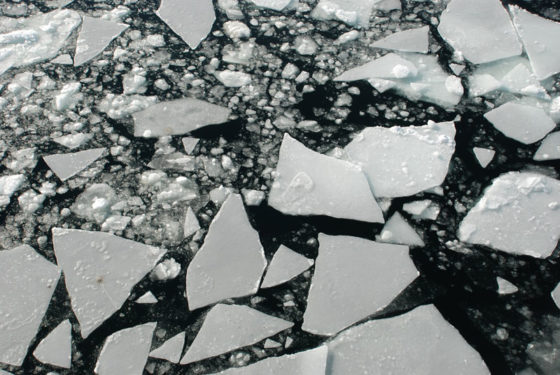Further declines in Arctic Sea ice levels could see the Northern Sea route (NSR) open to intercontinental shipping for up to six months each year, new research has found.
The study, by a team of Russian researchers, used satellite data and the Coupled Model Intercomparison Project (CMIP) climate data processing tool to model the trends of the NSR window. Their findings are published today in the journal Environmental Research Letters.
Lead author Dr Vyacheslav Khon, from the A.M. Obukhov Institute of Atmospheric Physics, Russian Academy of Sciences, said: “The NSR cuts the distance from northern Europe to northeast Asia and northwest North America by up to 50 per cent, compared to the southern routes through Suez or Panama Canal. The on-going Arctic sea ice decline means the NSR could become a potential alternative for intercontinental navigation between Atlantic and Pacific regions in forthcoming decades.
“However, while the ice retreat potentially opens the route up, it brings with it a new set of problems. Extreme winds and waves are likely to be more frequent, and coastal erosion will increase – all of which will clearly pose a challenge to shipping.”
The researchers used a novel modelling approach to develop their estimates. They analysed simulations with global climate models within the CMIP5 to estimate the possible changes in the NSR transit navigation season for the 21st century. The simulations were driven by combined historical-Representative Concentration Pathway 4.5 (RCP4.5) and 8.5 (RCP8.5) scenarios (which predict a temperature rise between 1.1 to 2.6 degrees and 2.6 to 4.8 degrees by the year 2100).
They processed daily sea ice concentration (SIC) data of 25 climate models. For any particular day, they considered a map grid cell with SIC less than 15 per cent as ice-free (or open water). This standard is used as a threshold for the possible navigation of light ice-class ships.
The team selected climate models capable of reproducing both mean values and trends of NSR transit navigation seasons estimated from satellites over the past decades.
Dr Khon said: “According to CMIP5 models with the RCP4.5 scenario, the growth rate of the NSR navigation will slow down over the next few decades. By the end of this century, we expect the window for NSR transit navigation to be about four and six and-a-half months according to RCP4.5 and 8.5 respectively, based on the ensemble-mean estimates. We also found that the trends for the end date of the navigation season are stronger than those for the start date.”
